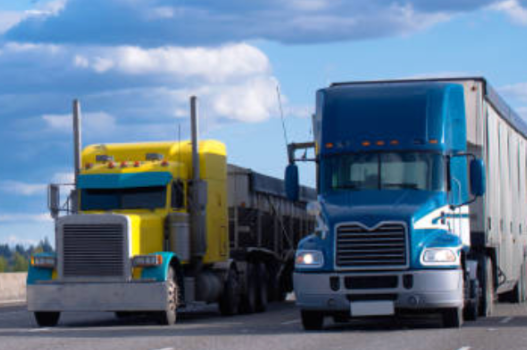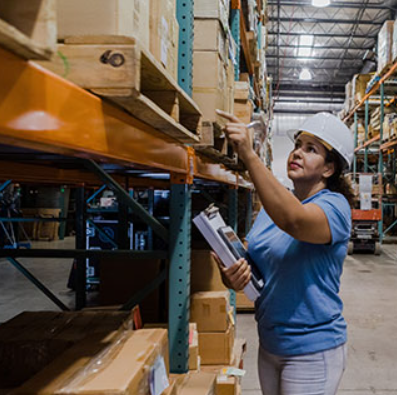
The field of fleet route optimization has come a long way in a relatively short period. What was once a time-consuming, manual process has evolved into a high-tech operation with near-limitless possibilities, thanks to advancements in technology. In this article, we’ll take a look at the evolution of fleet route optimization, from the early days of basic planning methods to the sophisticated systems used today.
What Is Route Optimization?
At its core, route optimization is the process of planning the most efficient routes for a fleet of vehicles. Imagine planning a road trip with multiple stops; now, think of doing that with a fleet of trucks making 20 to 30 deliveries each day. Modern route optimization involves far more than just selecting the shortest route on a map. It requires factoring in delivery schedules, the types of goods being transported, and fuel efficiency, among other variables. The ultimate goal is to deliver goods on time, maintain reasonable driver hours, and keep operational costs in check.
The Early Days of Route Planning (1990s)
In the 1990s, fleet route planning was primarily a manual process. One example comes from Simon, who worked in route planning for a distribution company in the UK during this time. He recalled using paper-based systems, despite having a rudimentary digital system in place for recording orders. The task of planning hundreds of deliveries every day involved manually sorting orders into groups, estimating travel times, and organizing routes based on the planner’s knowledge of the area. This was a highly subjective process, reliant on experience and intuition, rather than sophisticated algorithms.
Simon explained, “I would start my shift by gathering orders and sorting them by postcode. Then, I would manually arrange them into delivery routes, ensuring that each vehicle was fully loaded, but not overburdened. It could take hours, especially during peak periods, and the results weren’t always optimal.”
There were no digital maps or route optimization tools. Instead, Simon relied on A-Z map books, and any attempts at optimization were done by hand. There were no clear insights into factors like fuel consumption or route efficiency—just estimations based on weight and distance.
The Shift to Digital Tools
By the late 1990s, the company introduced digital tools, replacing the paper-based system with a rudimentary ERP system. This software digitized the paper slips, but still lacked essential route optimization features like mapping or automated planning. The real breakthrough came with the introduction of more advanced systems in the early 2000s. These systems featured basic map-based tools and offered automated load planning, but still required significant manual input and fine-tuning.
While these new systems were a significant improvement, they were still far from the fully optimized tools we have today. Early versions of route optimization software focused mainly on mapping and basic scheduling, with little regard for other important factors like fuel efficiency or real-time traffic data.
The Rise of Advanced Route Optimization
Fast forward to the present day, and fleet route optimization has undergone a dramatic transformation. Today, companies rely on sophisticated software that accounts for a wide range of variables, including traffic patterns, delivery time windows, driver breaks, fuel efficiency, and vehicle load capacity. The introduction of GPS and telematics has revolutionized route optimization by providing real-time data on vehicle locations and conditions, enabling planners to adjust routes dynamically.
Modern route optimization tools use algorithms that factor in road types, average speeds, driver regulations, and even packaging dimensions to create the most efficient routes. These advancements not only save time and money but also allow for on-the-fly adjustments to account for delays, unexpected orders, or changing conditions.
The Role of Converging Technologies
Several key technologies have converged to make today’s fleet route optimization more efficient than ever:
- GPS and Telematics: Real-time tracking of vehicles allows fleet managers to monitor and adjust routes based on actual driving conditions. This data helps improve route planning and provides insights into driver performance and fuel usage.
- Big Data and Analytics: With access to vast amounts of data from both internal and external sources, fleet managers can make more informed decisions. This includes considering variables such as traffic forecasts, weather conditions, and historical performance.
- AI and Machine Learning: Artificial intelligence (AI) has elevated route optimization by integrating real-time data with predictive analytics. Machine learning algorithms can continuously adapt to changing conditions, improving route planning and delivery accuracy over time.
The Future of Fleet Route Optimization
As technology continues to evolve, the future of fleet route optimization looks promising. New developments could focus on enhancing the automation of planning processes, reducing the need for human intervention. However, even with the most advanced systems, human expertise will still play a crucial role in adapting to new circumstances, particularly when it comes to navigating unfamiliar areas or handling unexpected disruptions.
The integration of smart infrastructure could take things to the next level, where route optimization software connects with city traffic management systems. This could help reduce congestion and improve fleet efficiency by facilitating smoother traffic flow.
Furthermore, autonomous vehicles are set to be a game-changer in the logistics industry. If fully realized, autonomous trucks could eliminate the need for driver rest periods, allowing for continuous operation and further improving route efficiency. Additionally, drones and small robotic vehicles may become an integral part of last-mile delivery, bypassing road traffic altogether for quicker, more direct deliveries.
Conclusion
Fleet route optimization has come a long way since its early days of manual planning and rudimentary digital tools. Today, advanced software solutions that integrate real-time data, predictive analytics, and machine learning have revolutionized the way logistics companies plan and execute their routes. While the journey from the 1990s to today has been remarkable, the future holds even greater potential, with autonomous vehicles and smart infrastructure promising to reshape the logistics landscape.
For logistics companies, staying ahead in the world of route optimization is essential. Investing in the right tools and technologies can help streamline operations, reduce costs, and improve service delivery—ultimately driving business success in an increasingly competitive market.












